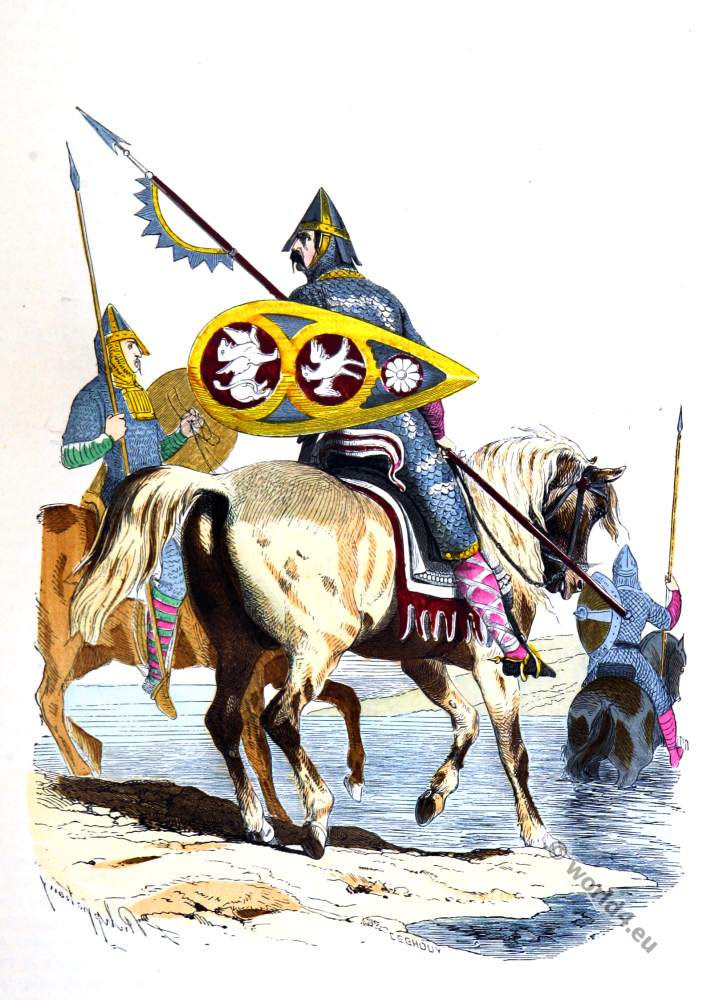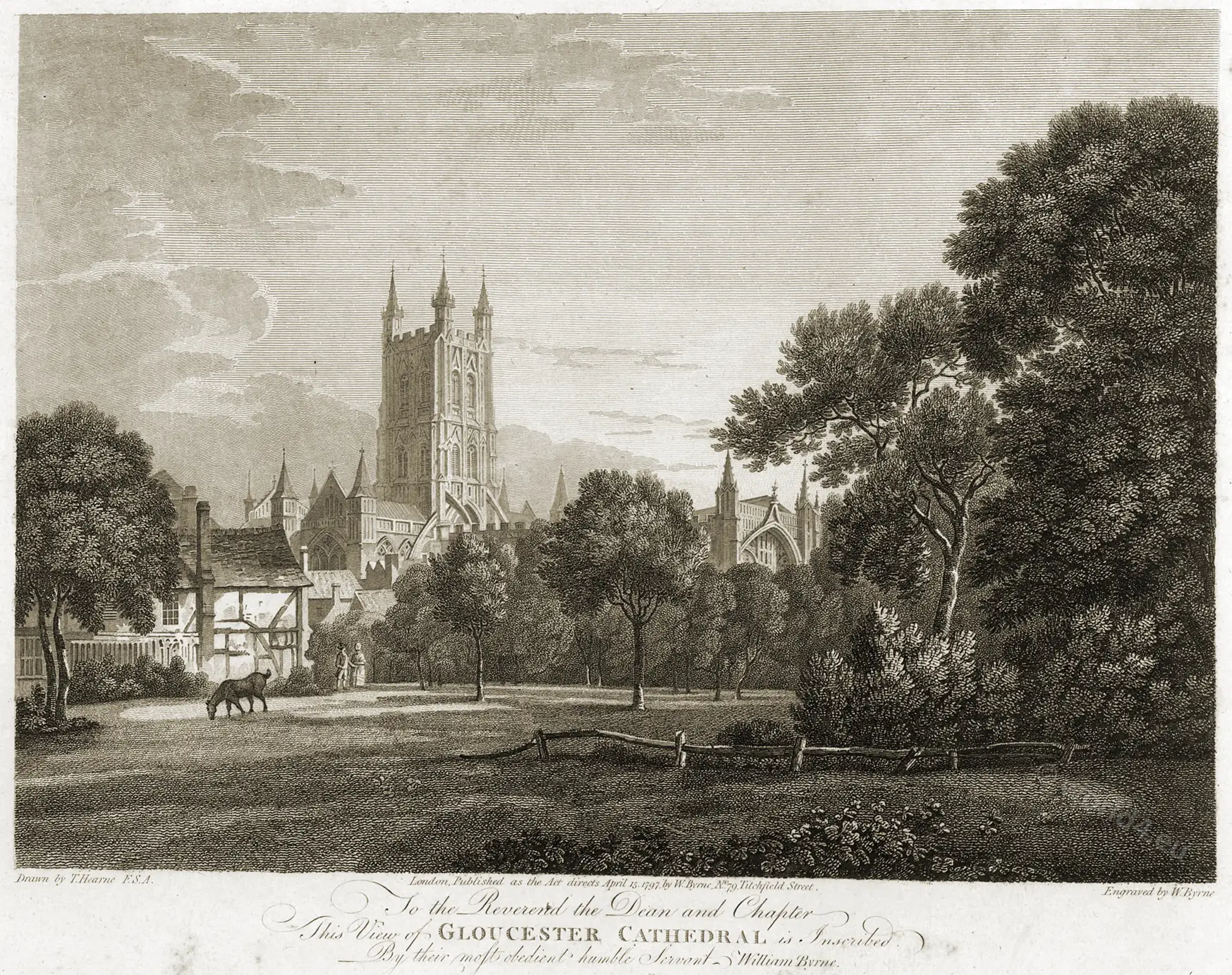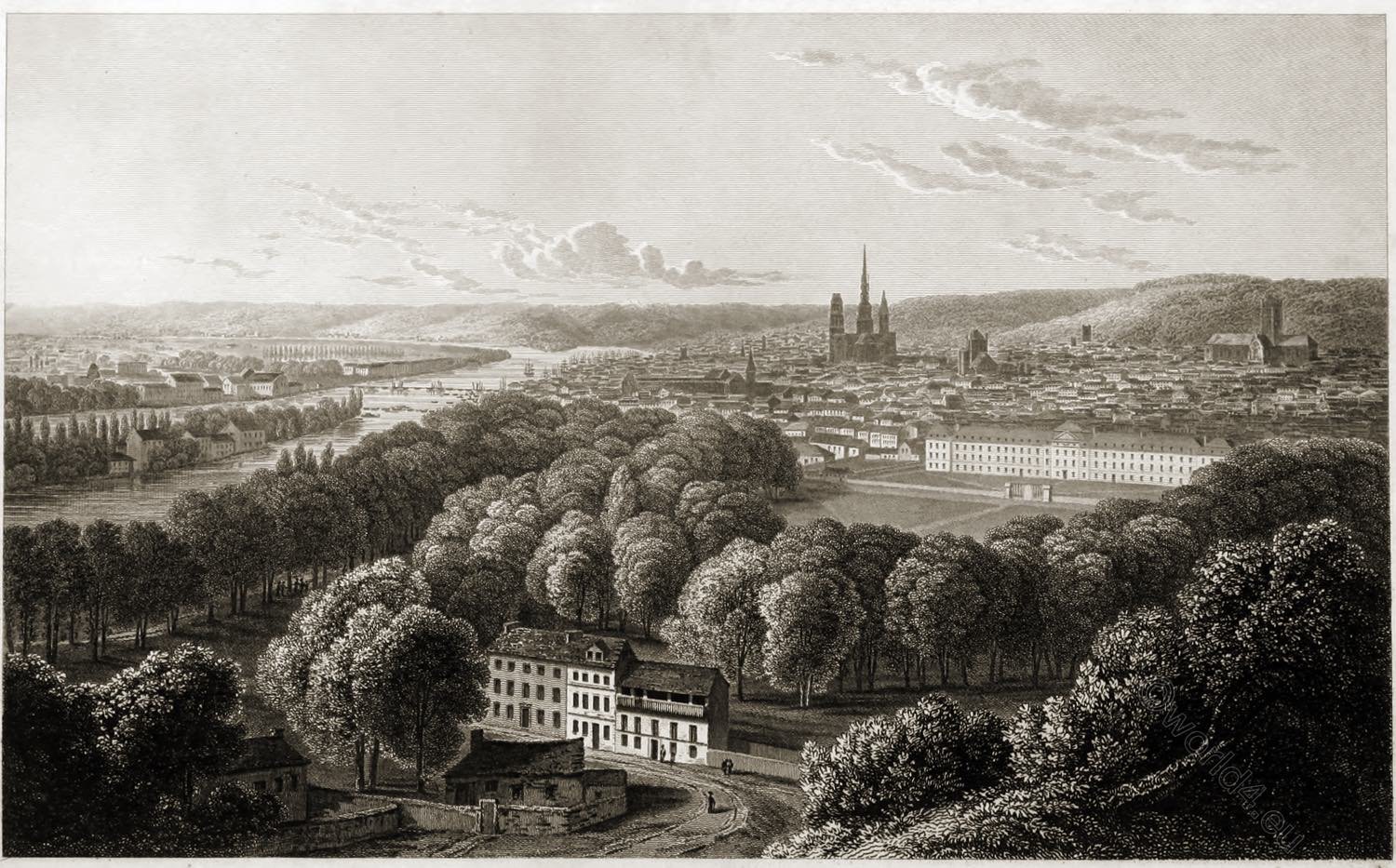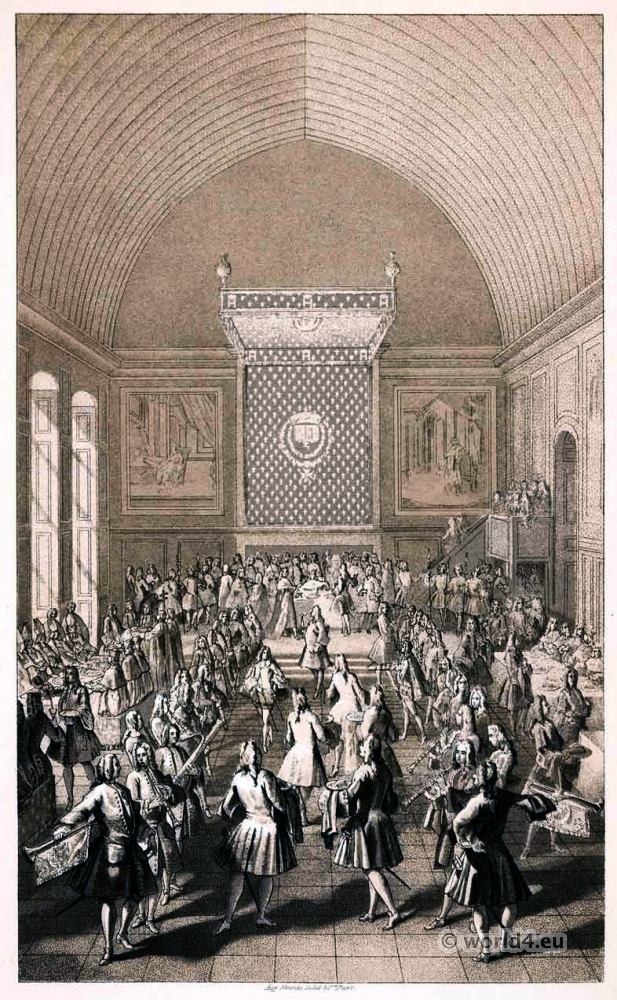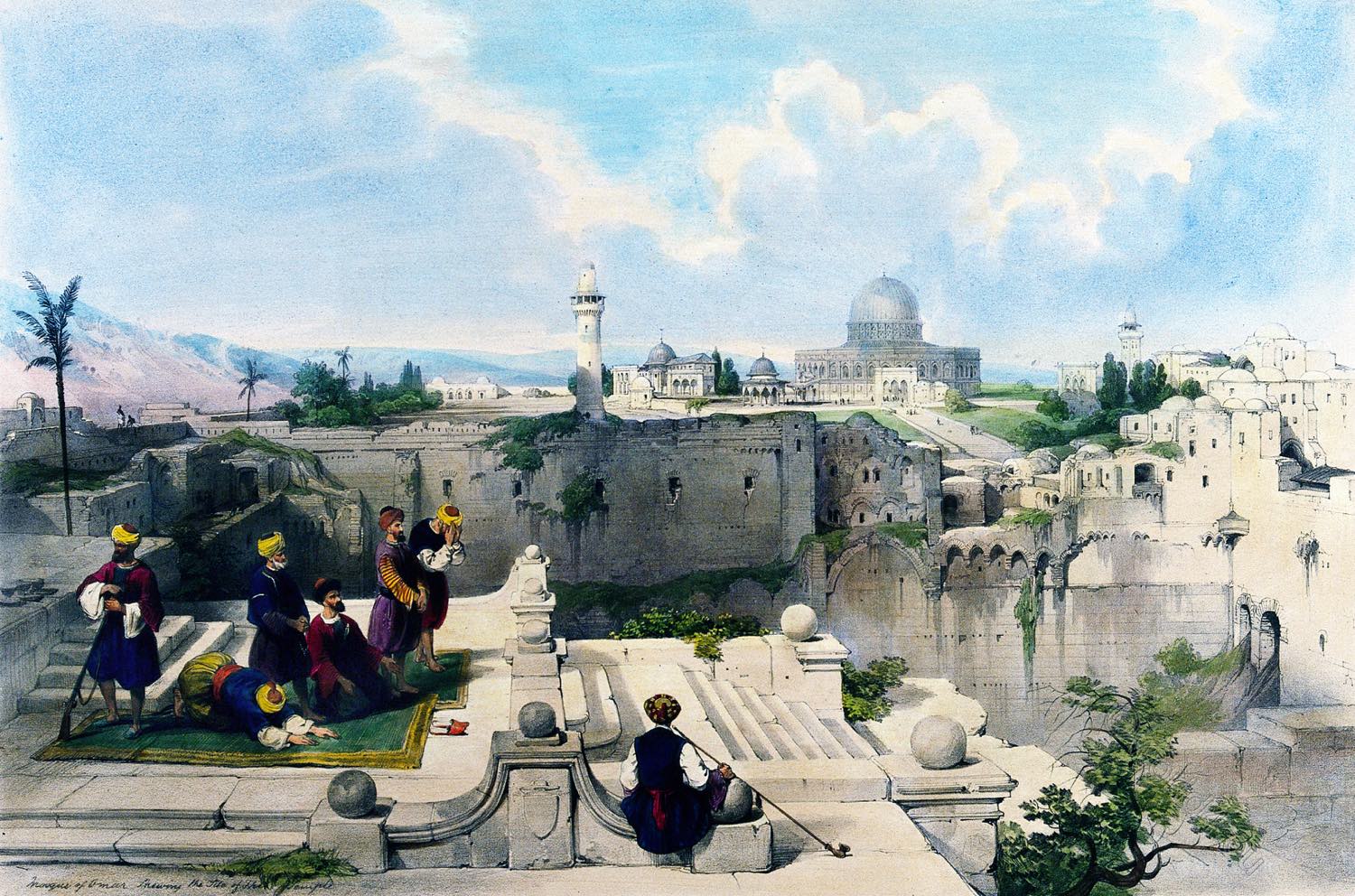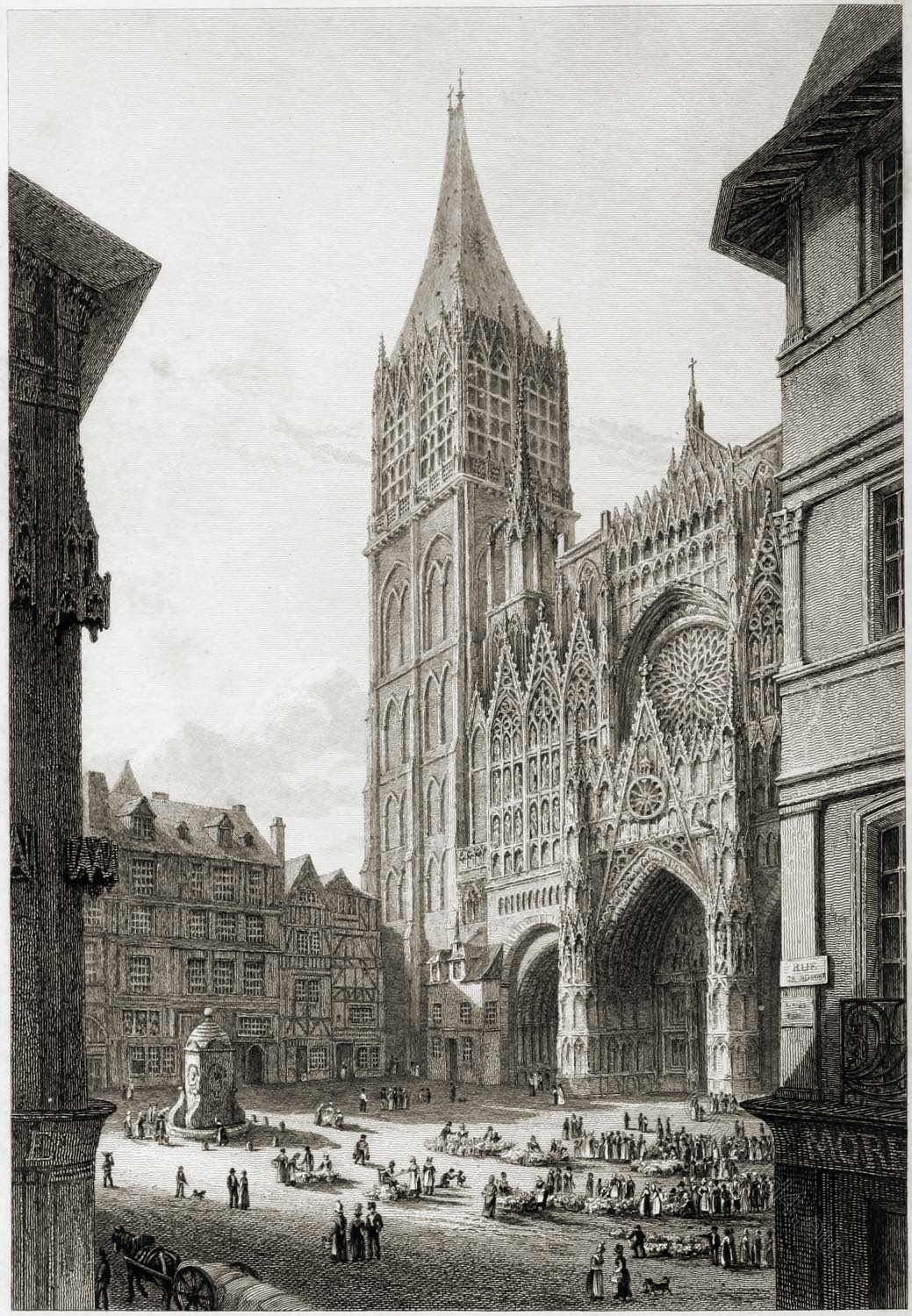
The Rouen Cathedral, (French: Cathédrale primatiale Notre-Dame de l’Assomption de Rouen), coronation site and burial place of the Norman dukes as well as metropolitan church of Normandy, is one of the most important church buildings in France in the Gothic style. Notre-Dame de l’Assomption is still the cathedral of the Archbishop of Rouen, Primate of Normandy.
We owe the most impressive depictions of the cathedral to Claude Monet, whose impressionist series of paintings of Rouen Cathedral, depicting the building under a variety of lighting conditions, is one of the painter’s most important works. The cathedral contains the stone coffin with the heart of Richard the Lionheart. Saint Joan of Arc, was burned in Rouen in 1431.
ROUEN CATHEDRAL.
HISTORIANS inform us that this cathedral was first founded about the remote period of 270: it was rebuilt by St. Victrice 1) about the year 400. This second church was entirely destroyed during the invasion of the province of Neustrie *) by the Normans, in the year 842.
*) The name which this province bore prior to the Norman invasion.
Rollon *), first Duke of Normandy, caused a new church to be built; but it appears that there are now no vestiges remaining of this ancient structure : and we are assured that the oldest portion of the present edifice is not of higher antiquity than the twelfth century.
*) Norman: Rou, Rollo(u)n; Old Norse: Hrólfr; French: Rollon; c. 860 – c. 930 AD)
The principal front of this cathedral displays a magnificent pile of building: it is 170 feet wide by 130 in height, and is ornamented with the two towers of St. Ambroise and St. Romain. The tower of St. Romain, which stands on the right of the front, is unquestionably the oldest piece of architecture of the whole church; its upper story was rebuilt in 1480: that of St. Ambroise was commenced in the year 1485, and completed in 1507. The great centre gate is in the form of a prominent porch, having its two side piers covered with a profusion of ornaments, and surmounted by obelisks. Above it is the great rose-window, which gives light to the interior of the cathedral.
The intervals between this part and the two towers are occupied by turrets, ornamented with arcades, beneath which several rows of statues are placed.
A richly sculptured gable surmounts the gothic arch which surrounds the rose-window, and crowns the centre of the whole front, whose admirable construction dis- plays, from its basis to its summit, all that this rich and elegant style of architecture is capable of producing.
Engraved by Edward Goodall.
1) Victricius, also Victrice (* c. 340; – before 409, probably 407) was a Roman and Bishop of Rouen as well as author of the Christian writing “In Praise of the Saints” and a saint.
Source: French scenery: from drawings made in 1819 by Robert Batty (1788 or 1789-1848). London: Published by Rodwell & Martin, New Bond Street, 1822.
Discover more from World4 Costume Culture History
Subscribe to get the latest posts sent to your email.

